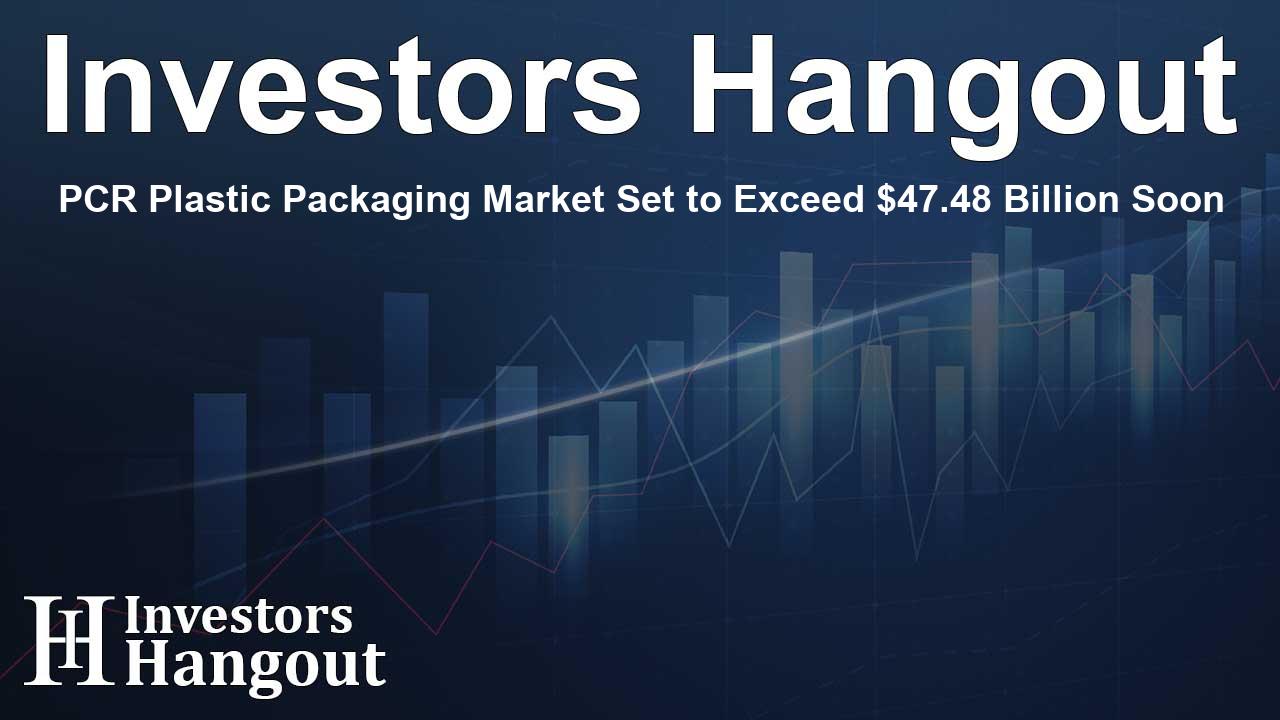PCR Plastic Packaging Market Set to Exceed $47.48 Billion Soon

Understanding the Growth of the PCR Plastic Packaging Market
The global PCR plastic packaging market is experiencing significant growth, with projections indicating an increase from USD 21.28 billion in 2025 to an impressive USD 47.48 billion by 2033. This growth reflects a solid annual expansion rate of 10.49% from 2024 to 2033. The growing emphasis on environmental sustainability is driving demand for packaging solutions that incorporate post-consumer recycled materials.
Driving Factors Behind Market Expansion
Demand for Recycled Plastics
The term "PCR," or post-consumer recycled materials, encompasses plastics like PET, PP, and HDPE, which are extensively recycled into usable resin for new packaging. As consciousness about pollution rises, the appetite for packaging produced from recycled materials is growing, pushing more businesses to consider environmentally friendly options.
Supporting Legislation
Worldwide, numerous governments are enacting laws advocating for increased use of recycled content in products. This legislative framework is fundamentally shifting corporate strategies toward sustainability, thereby enhancing the attractiveness of PCR plastics. Staying compliant not only mitigates legal risks but can also improve a brand's reputation.
Market Segmentation
The PCR plastic packaging market can be broken down into several segments, including material types, products, and end-users. Each of these categories plays a unique role in the market's dynamics.
Material Types and Their Market Share
One of the dominant materials in this market is PET, which held the largest market share in 2023. The lightweight and recyclable nature of PET makes it a preferred choice in various applications, especially in sectors like food and beverages. Other emerging materials such as PVC are also starting to gain traction due to their favorable properties and market demand.
Product Categories
Products such as bottles, trays, and pouches make up crucial segments of the PCR plastic packaging market. Bottles are particularly noteworthy, representing approximately 42.78% of the market share. Consumers’ inclination towards sustainable single-use and refillable options is likely to drive continued growth in this segment.
End-user Insights
Among end-users, the food and beverages sector contributes over 57.18% of the market share, underscoring the pressing need for sustainable packaging solutions across this high-usage category. Moreover, as part of rising consumer expectations for eco-friendly products, other industries—such as cosmetics—are beginning to integrate PCR materials, further broadening the market scope.
Regional Highlights and Future Projections
North America currently leads the global market, highlighted by significant investments in recycling technologies and increasing public awareness. As these trends continue, it is anticipated that North America's PCR plastic packaging market will reach around USD 16.19 billion by 2033. Conversely, the Asia Pacific region is predicted to showcase the fastest growth rate, propelled by rapid advancements in packaging technologies and increasing government support for sustainable practices.
Growth Factors in Focus
Environmental Awareness
Growing concerns about the environmental impact of plastic waste are compelling businesses to seek alternatives that reduce their ecological footprint. Utilizing recycled materials allows companies to cut greenhouse gas emissions and energy consumption significantly, bolstering the case for transitioning to such sustainable practices.
Legislative Enforcement
The amplified regulatory actions globally to tackle plastic pollution are expected to promote innovation in recycling and increase the adoption of PCR materials throughout various industries, ensuring that companies can adapt to market expectations and legal guidelines effectively.
Frequently Asked Questions
What is PCR plastic packaging?
PCR plastic packaging refers to packaging made from post-consumer recycled materials, which are processed from previously used plastic products to create new packaging solutions.
How is the PCR plastic packaging market expected to grow?
It is projected to grow from USD 21.28 billion in 2025 to USD 47.48 billion by 2033, driven by increased demand for sustainable packaging and regulatory support.
What materials dominate the PCR plastic packaging market?
PET is the dominant material in this market, followed by PP and PVC, each offering unique properties that cater to various packaging needs.
Which sectors utilize PCR plastic packaging?
The food and beverages sector is the largest end-user, with other significant uptakes from cosmetics, healthcare, and industrial packaging.
What regions are seeing the most growth in the PCR plastic packaging market?
North America leads the market, but Asia Pacific is expected to grow the fastest due to technological advancements and environmental initiatives.
About Investors Hangout
Investors Hangout is a leading online stock forum for financial discussion and learning, offering a wide range of free tools and resources. It draws in traders of all levels, who exchange market knowledge, investigate trading tactics, and keep an eye on industry developments in real time. Featuring financial articles, stock message boards, quotes, charts, company profiles, and live news updates. Through cooperative learning and a wealth of informational resources, it helps users from novices creating their first portfolios to experts honing their techniques. Join Investors Hangout today: https://investorshangout.com/
Disclaimer: The content of this article is solely for general informational purposes only; it does not represent legal, financial, or investment advice. Investors Hangout does not offer financial advice; the author is not a licensed financial advisor. Consult a qualified advisor before making any financial or investment decisions based on this article. The author's interpretation of publicly available data shapes the opinions presented here; as a result, they should not be taken as advice to purchase, sell, or hold any securities mentioned or any other investments. The author does not guarantee the accuracy, completeness, or timeliness of any material, providing it "as is." Information and market conditions may change; past performance is not indicative of future outcomes. If any of the material offered here is inaccurate, please contact us for corrections.